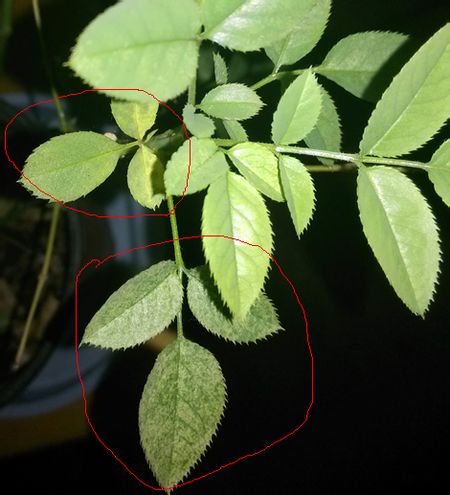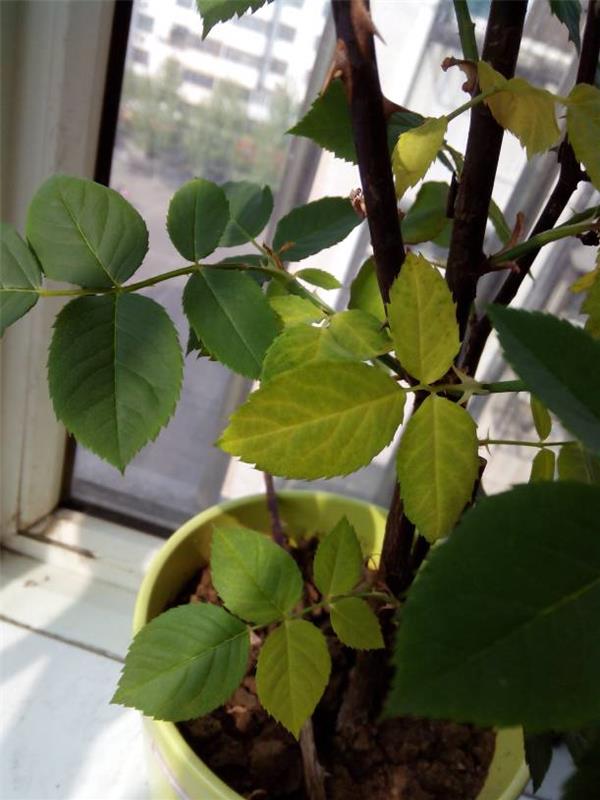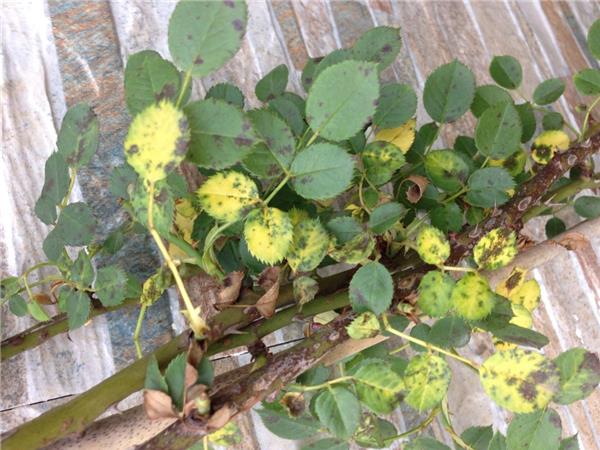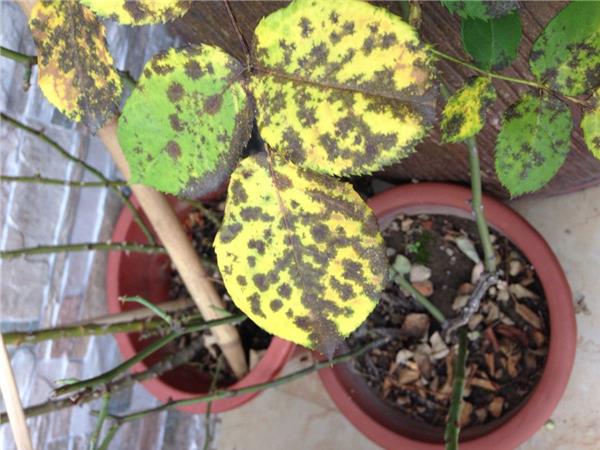[what to do if the rose leaves are yellow] how to raise the rose well
What is the reason why the leaves of several pots of rose and dwarf florets selected and purchased by the flower market soon turn yellow and fall off? Is there any way to fix it? The rose is well ventilated and well lit. Most of the potted roses bought in the flower market in spring are cultivated in the open field in a greenhouse with superior conditions or in direct sunlight, and are placed indoors after they are shipped back. One is due to lack of light, poor ventilation, and too much or too dry watering. The sudden change in the environment caused the leaves to turn yellow and fall off. Rose is a kind of plant that is easy to cultivate, but the most common phenomenon of rose flowers is the aging of flowers, so what if the rose leaves are yellow?

If the florescence is watched indoors, it is best to put it during the day, move it outdoors at night, and put it back in the next morning. Keep the basin soil moist but not wet, not too wet or too dry for a long time. After the flower is moved to the outdoor for cultivation and maintenance in the direct sun, it can be ornamental without damaging the plant. At present, the remedy should be moved to outdoor direct sunlight to control the amount of water and times of watering. Even if the natural temperature is below O ℃, it is not necessary to move back to the room. After a period of recovery, the latent buds are pruned when they are just sprouting, and they are likely to be leafless after pruning. They should be watered, loosen the soil frequently and keep the soil surface transparent. Increase the soil temperature and restore growth quickly. Another method, after moving it outdoors, take off the basin to remove part of the persistent soil, plant it on the border land, and the recovery is more guaranteed.
Rose leaves turn yellow for the following reasons:
The main results are as follows: 1 if the watering is excessive, the principle of dry and thorough watering should be grasped.
2 the light is too little, it usually takes more than 6 hours of light to make the leaves green and colorful.
(3) poor ventilation, dry and muggy environment, withered and yellow leaves, easy to get powdery mildew.
(4) the indoor temperature is too high or too low.
5 lack of nutrients, rose like fat, should be thin and fertilized frequently, otherwise the leaves are yellow and will not blossom.
(6) improper fertilization, excessive fertilization or application of unmature organic fertilizer will cause "root burning" and cause withering and yellowing.
The soil should be loose and fertile, poor drainage, soil hardening, leaves yellowing, and even death.
8 insect pests. Damaged by pests such as red spiders and shell insects, the leaves will also turn yellow.

Rose cultivation and management
Rose transplantation is carried out between November and March of the following year, and pruning can be carried out at the same time, first cutting off dense branches and withered branches, and then cutting off old and weak branches, leaving 2 or 3 buds growing outward in order to spread out in all directions. Cut the especially strong branches properly to strengthen the growth of the weak branches. when the new branches grow too dense in summer, the upper part of the branches connected to the residual flowers should be cut off in time after each batch of flowers, so as not to make the seeds consume nutrients, and to retain the full branches in the middle and lower parts. promote early new branches to bloom again. Rose needs to re-apply basal flowers before flowering and then apply quick-acting nitrogen fertilizer to strengthen seedlings to promote flowering. Rose has strict requirements on water, not too wet and too dry, too dry and withered, and too wet will hurt roots and leaves.
The main pests of rose are aphids, leaf roll moth, diamondback moth and so on. 1000-1200 times dimethoate or isocarbophos are mainly used for control.
Rose florescence control
Rose, also known as "month red", blossoms continuously from May to November. However, it is still very important to control the florescence of rose during the Olympic Games, especially potted rose and cut rose. In order to successfully complete the temporary arrangement of flowers and the supply of cut flowers in various venues and stadiums during the Olympic Games.

In the actual work, according to the specific analysis of the specific situation, according to the geographical location, under the condition of ensuring continuous flowering, let it blossom more and blossom well from August 8 to 24. The following methods are for reference: around June 20, all the residual flowers and some of the blooming branches of the ground rose were pruned at the proportion of 50% to the round bud position of the mature part in the middle of the flower branch, and the flowering viewing period was about August 1-15; all the residual flowers and all blooming branches were pruned according to the above method around June 30, and the flowering viewing period was about August 10-25. Trim the residual flowers at any time after June 30 to make them bloom naturally. Potted rose and cut rose calculate the flowering date and conduct comprehensive branch pruning about 45 days before flowering.

Fertilizer and water management in the above various conditions of pruning, it is necessary to combine plant growth and carry out scientific fertilizer and water management. When the plant is pruned, 0.2% urea is used to spray fertilizer on the leaves every 5 or 6 days when the new generation of buds are not germinated, which can promote the germination of new buds; if the plant grows fast, the new branches grow rapidly, and when it is beyond the planned range, controlling water supply can delay the growth. In the process of water control, after the branches and leaves wilted, spraying water in time, it was critical to recover within 1 hour. Water is the carrier of various enzymes in plants. Water supply is insufficient, enzyme activity decreases, metabolism slows down, and plant growth slows down. If the budding of the new branch is later than planned, the bud grows rapidly when 0.2% potassium dihydrogen phosphate is sprayed on the leaf every 5 or 6 days. Rose flowering period to consume a lot of water and body nutrition, water supply should be adequate.
When the new generation of buds do not germinate, spraying 0.2% urea on the leaves every 5 or 6 days can promote the germination of new buds; if the plant grows fast, the new branches grow rapidly, and when it is beyond the planned range, controlling water supply can delay the growth. In the process of water control, after the branches and leaves wilted, spraying water in time, it was critical to recover within 1 hour. Water is the carrier of various enzymes in plants. Water supply is insufficient, enzyme activity decreases, metabolism slows down, and plant growth slows down. If the budding of the new branch is later than planned, the bud grows rapidly when 0.2% potassium dihydrogen phosphate is sprayed on the leaf every 5 or 6 days. Rose flowering period to consume a lot of water and body nutrition, water supply should be adequate.
- Prev

[what to do if the leaves of umbrella bamboo turn yellow] how to raise umbrella bamboo
[what to do if the leaves of umbrella bamboo turn yellow] how to raise umbrella bamboo
- Next

[what to do if the golden diamond leaves turn yellow] how to raise the golden diamond
[what to do if the golden diamond leaves turn yellow] how to raise the golden diamond
Related
- Wuhan Hospital Iron Tree Blooming Result Was Instantly Frightened by the Gardener Master
- Which variety of camellia is the most fragrant and best? Which one do you like best?
- What is the small blue coat, the breeding methods and matters needing attention of the succulent plant
- Dormancy time and maintenance management of succulent plants during dormancy
- Minas succulent how to raise, Minas succulent plant pictures
- What are the varieties of winter succulent plants
- How to raise succulent plants in twelve rolls? let's take a look at some experience of breeding twelve rolls.
- Attention should be paid to water control for succulent plants during dormant period (winter and summer)
- Watering experience of twelve rolls of succulent plants
- Techniques for fertilizing succulent plants. An article will let you know how to fertilize succulent plants.

